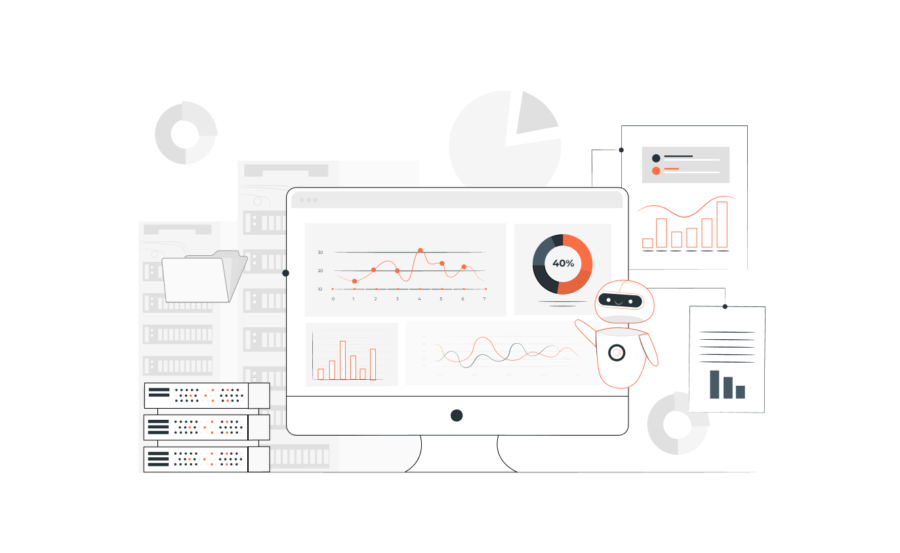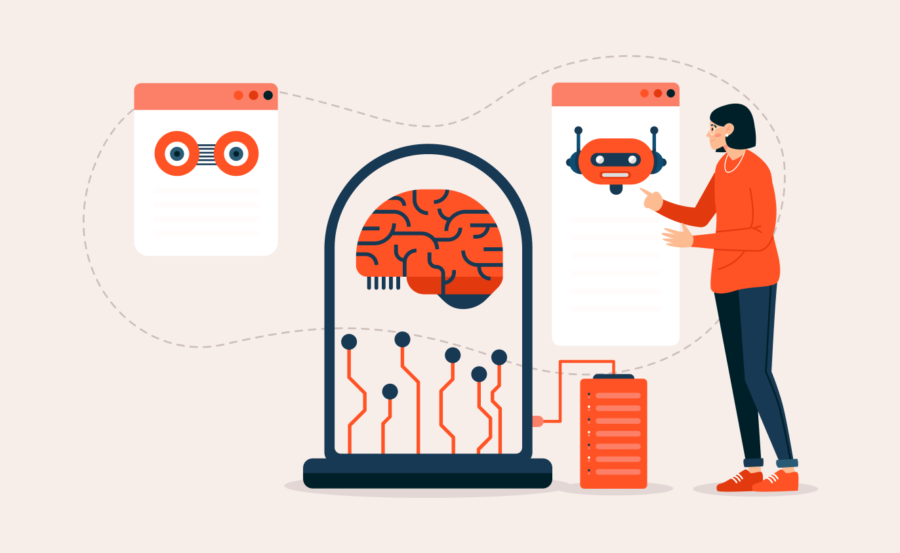Today, one term stands out as a beacon of growth and progress: AI transformation. As the world races to embrace the capabilities of artificial intelligence (AI), organizations, regardless of size, are presented with a unique opportunity to harness its transformative power. In this comprehensive guide, we’ll dive into the strategies that empower businesses to unlock the full potential of AI transformation. Welcome to a new era of possibilities.
The Power of AI Transformation
Imagine a business environment where operations are optimized for unparalleled efficiency, customer experiences are elevated to new heights, and strategic decisions are backed by data-driven insights. This is the promise of AI transformation. At its core, AI empowers businesses to revolutionize processes, reshape strategies, and elevate interactions with customers and clients.
AI-driven innovation is no longer a distant dream. It’s a present reality that’s reshaping industries across the globe. From healthcare to finance, manufacturing to marketing, AI is becoming an integral part of operations, improving efficiency, accuracy, and the overall bottom line. It’s not just about automating tasks; it’s about reimagining possibilities.
Preparing for AI Transformation
Identifying Business Needs and Objectives
Before delving into the intricate world of AI, it’s imperative to take a step back and assess your organization’s unique needs and objectives. By identifying areas where AI can streamline processes or enhance customer experiences, you lay the foundation for a successful transformation.
Start by analyzing your current processes. Where are the bottlenecks? What tasks are repetitive and time-consuming? Where can AI bring about the most impact? Whether it’s optimizing supply chain management or personalizing customer interactions, AI can be tailored to suit your specific needs.
Choosing the Right AI Solution
The AI landscape is vast, encompassing a spectrum of technologies including chatbots, natural language processing, machine learning, and deep learning. The key lies in selecting an AI solution that aligns seamlessly with your organization’s scalability requirements, integration capabilities, and overarching business goals.
Each AI technology has its strengths. Chatbots can enhance customer support, providing instant responses and freeing up human agents for complex tasks. Natural language processing allows you to extract insights from unstructured text data, enabling you to understand customer sentiments and market trends. Machine learning and deep learning models empower you to make accurate predictions based on historical data.
Read more
Building the Foundation
Developing a Data Strategy
Data is the lifeblood of AI. A robust data strategy is essential for success. It involves determining the necessary data types, devising methods to acquire and store data, ensuring compliance with data privacy regulations, and utilizing data analytics to gain valuable insights.
Consider the data you have at your disposal. How can it be leveraged to train AI models effectively? What data sources are necessary to ensure comprehensive insights? A well-defined data strategy not only ensures accurate results but also builds trust with customers who value their data privacy.
Building an AI Team
The journey toward AI transformation demands a proficient and diversified team comprising data scientists, machine learning engineers, data engineers, and domain experts.
Collaboration is key in AI development. Data scientists bring their expertise in understanding complex algorithms, machine learning engineers fine-tune models for accuracy, data engineers ensure smooth data pipelines, and domain experts provide valuable context that shapes the AI’s capabilities. A well-rounded team is your driving force in the AI journey.
Executing AI Transformation
Training Your AI Model
Imagine training an AI model as you would educate a talented apprentice. Through the provision of comprehensive datasets and collaboration with experts, your AI model learns patterns and acquires the capability to make informed predictions.
The training phase is where the magic happens. Your model learns from historical data, identifying patterns and relationships that might not be apparent to human eyes. This enables the AI to make predictions, classify data, and even generate responses in the case of chatbots.
Integrating AI into Operations
The integration phase marks a significant milestone. Your well-trained AI model becomes an integral component of your business operations, contributing to process optimization and enhancing customer interactions.
Integration is about more than just technology; it’s about change management. Your team needs to be prepared for the new ways of working that AI brings. This involves training employees, adapting processes, and ensuring a smooth transition to AI-driven operations.
Monitoring and Sustaining AI Transformation
Monitoring Performance and KPIs
The journey doesn’t culminate with integration—it marks a new beginning. Regular performance monitoring against carefully defined KPIs is essential.
AI models need ongoing monitoring to ensure they continue to deliver accurate results. KPIs might include accuracy rates, response times, or customer satisfaction scores. Monitoring helps you identify any deviations or issues that might arise, allowing for timely adjustments.
Continuous Improvement and Adaptation
In the realm of AI transformation, continuous improvement is the bedrock of sustained success. As your business evolves, so should your AI strategy.
The beauty of AI lies in its adaptability. As your business grows and changes, your AI models can evolve to meet new challenges. This might involve retraining models with updated data, incorporating new features, or exploring emerging AI technologies that can further enhance your operations.
A Glimpse into the Future
In the age of AI transformation, opportunities abound. Envision a business landscape where data fuels decisions, customer experiences are extraordinary, and operations are primed for innovation. AI is not just a tool; it’s a mindset that propels businesses toward a brighter and more efficient future.
As you embark on your AI transformation journey, remember that the power to innovate is within your grasp. With the right strategies, a dedicated team, and a commitment to continuous improvement, you’re well on your way to harnessing the true potential of AI.
Unleash the power of AI transformation with NeoITO. Explore our services, tap into our expertise, and embark on a journey that will redefine your business. Share your thoughts, questions, and experiences with us—we’re here to guide you through every step of the way. Contact us to learn more and begin your AI transformation today.






